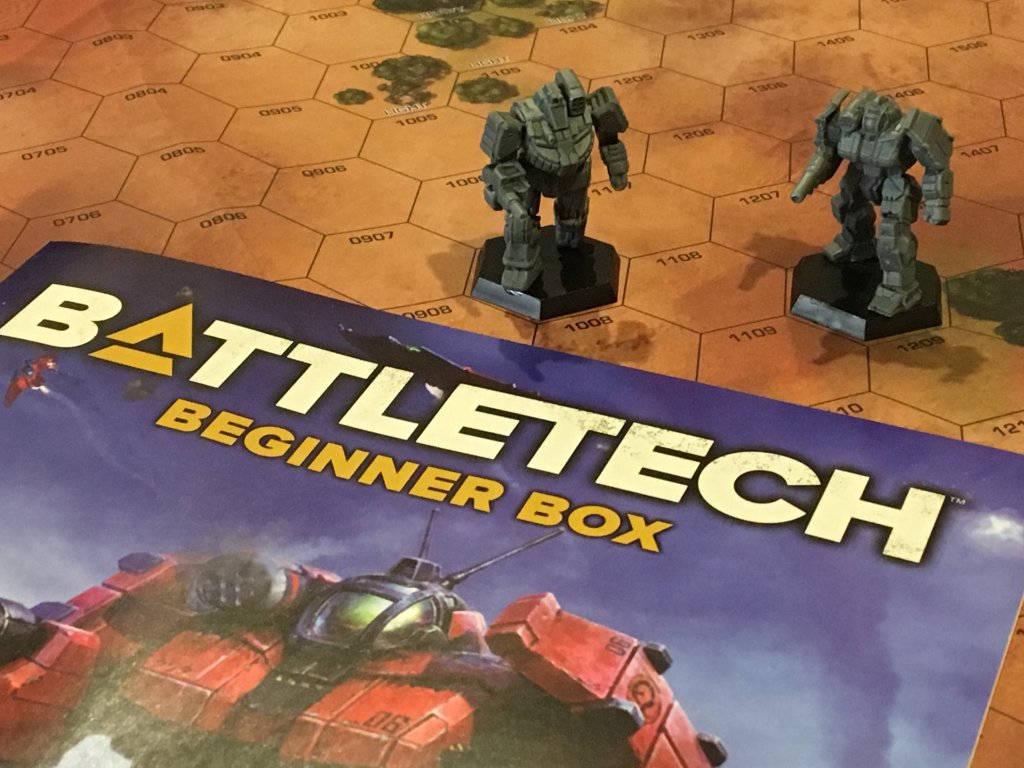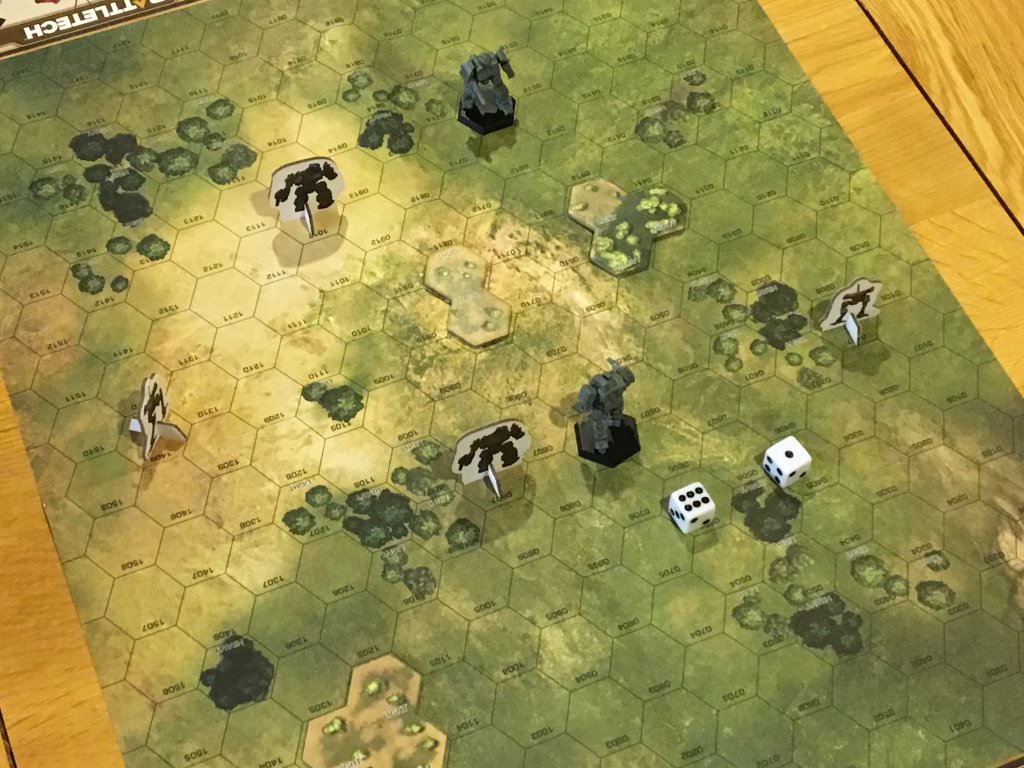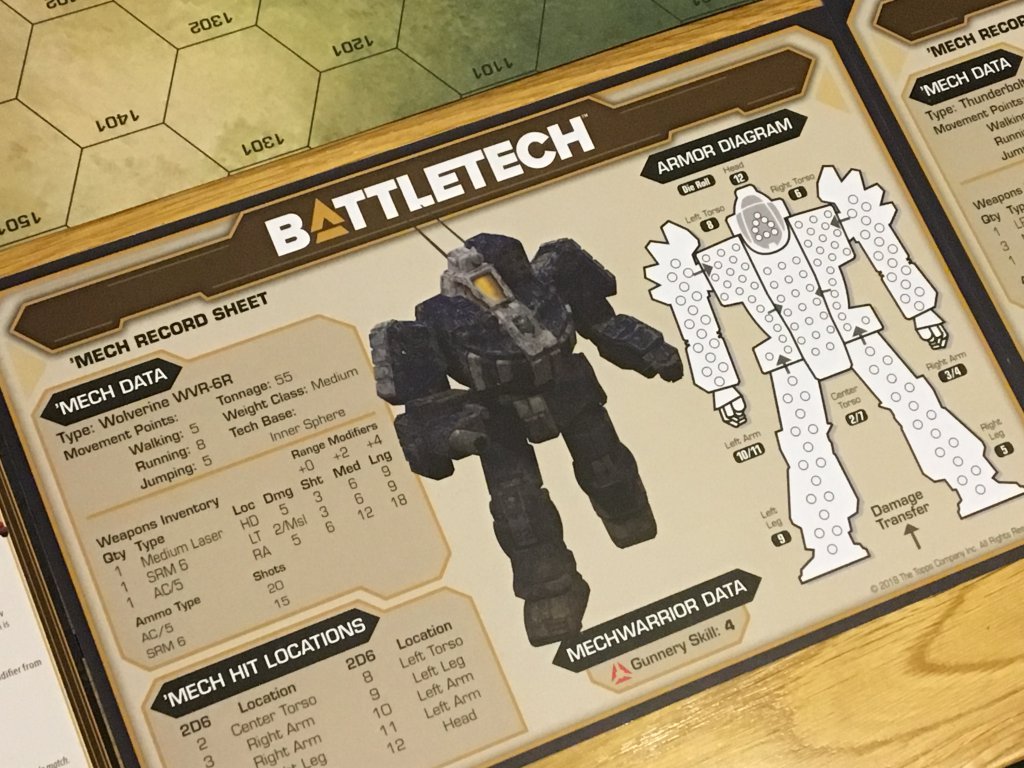When it comes to reviewing board games, there are numerous considerations to bear in mind. Who will this game appeal to? How well does it represent the genre that it resides in and, perhaps most importantly, what does it do to differentiate itself? Today’s review is for BattleTech, a game that first debuted over 30 years ago, so I’m going to have to treat it a little differently.
Firstly, Battletech is more of a system than a standalone game, but partly due to renewed interest in it as a result of 2018’s video game adaptation, there are a number of new products available for tabletop play. Today’s review covers two of these new products, the current BattleTech: Beginners Box and BattleTech: a Game of Armored Combat.
Before I go into detail about these specific products, I should briefly mention that there are numerous ways to consume the BattleTech universe. Firstly, there’s the modern video game, as well as the older but nonetheless entertaining MechWarrior games. On the tabletop, BattleTech can be played as a miniatures game, a board game or even as an RPG.
I’m mentioning this because I’ll be focusing entirely on the board game adaptation, which is played on printed maps (included in the box), covered in hexagonal spaces that determine the facing and movement of each mech. When played as a board game, BattleTech offers both a simple rule set and an advanced variant, with the latter being the normal way to play in most circumstances.
These two rule sets broadly align to the two boxed games that I have been playing through as well. The Beginners Box contains two plastic mechs and several card standee mechs, a number of pre-configured loadout sheets, a double sided map and a manual. There are some other bits and bobs like basic terrain and a few pilot cards, but for a meagre $20 (or local equivalent) the players get just enough components to get a taster for the game.
This is a good approach, because the more expensive sibling to the Beginners Box packs in considerably more hardware, including several plastic mechs, a load more standees, more maps, scenery and a few advanced features like pilot cards. The key difference, aside from the increased volume of stuff, is the manual — which is considerably thicker. If you’re a returning BattleTech player with some experience of the system or your confident in your interpretation of war games elsewhere, you should start with BattleTech: A Game of Armored Combat.
Even after a couple of games at the basic level and a whole raft of them with the advanced rules, I’ll likely still miss a few of the things that differentiate them, but the changes range from quite fundamental (such as how damage is assigned) to the less prominent, including rules for things like robots landing on top of each other. Differences in things like movement, line of sight, aiming and firing are all dead simple to understand.
A really strong point for BattleTech (as a system) is the wealth of material made available online and included for reproduction within these boxed games. Players can download and print sheets for their mechs to demonstrate damage received, ammo remaining and so on, as well as for tracking build and loadout. These features make playing the game a lot simpler — for example if a mech’s arm is hit for ten damage, the player will strike ten points of armour off that arm until it is destroyed and the damage moves inwards.
Based on my time with it, the strength of the BattleTech system lies with its powerful blend of simplicity and possibility. Even when playing with the advanced rules, most aspects of the game are overwhelmingly straightforward and based on common sense. High ground is better, trees obscure line of sight, the hex’s give mechs three front facing spaces and three rear facing ones. Damage, which I’d say is the most complex thing, makes perfect sense thanks to the sheets.
This simplicity in itself is not that impressive — and indeed almost all miniatures based board games at this scale use similar rules — it’s everything else that they allow the players to do. Mech’s can jump or even fly, they can fight in melee combat, they can have almost limitless loadout based on a simple classification system. The level of depth available to players who want to invest the time is limitless and a battle between two well formed battalions of four (ish) mechs is a joy to participate in.
Clearly the most exciting part of any game like this is almost always the combat, and again, BattleTech hits the nail on the head here. The combat system is based on a number of different weapon systems being attached to each mech, all of which can fire simultaneously, with its own rules, range and damage. When weapons do connect, the locations they hit are randomised (unless an effect like Called Shot says otherwise) which tends to keep mechs in the fight for a while, albeit with what feels like a tangible reduction in life expectancy.
As limbs are blown away, mechs lose the ability to move, shoot or perform other critical actions at an optimal level, leading to turns that become increasingly exciting and nerve wracking as the battle continues on. Heat is also a factor, meaning that when a certain threshold is reached, a mech must restart (which is awful news.) Powerful energy weapons like lasers generate a lot of heat, so even as the mechs are hanging on for dear life in terms of damage, those attacking them will often be making decisions about whether they can actually fire all their weapons or not.
Even with the two boxed sets I have and the combinations of mechs that I’ve fielded, I am certain that BattleTech has so much more to offer. With such aged depth, so much historic playtesting and continued ongoing support, BattleTech is a system that feels like its been well proven already which will only continue to improve. With an entry level box at less than $20 dollars, anyone who is even remotely interested in mech based combat should dive straight in. If you’re already convinced, go directly to the bigger box, you won’t regret it.
BattleTech: Beginners Box and BattleTech: A Game of Armored Combat are available for purchase now. You can read more about them here.
Love board games? Check out our list of the top board games we’ve reviewed.






